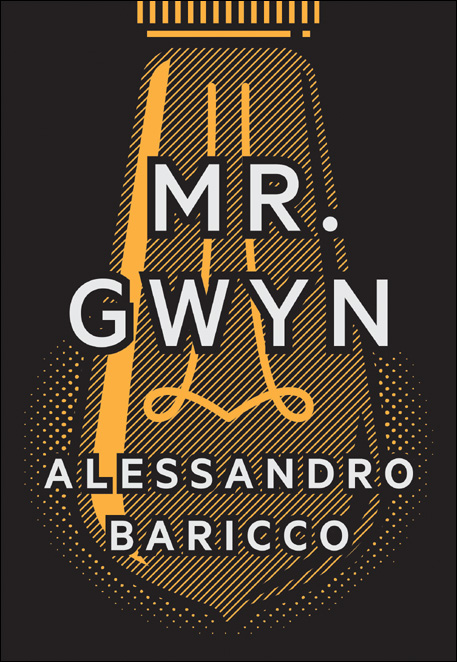
Mr. Gwyn
- اطلاعات
- نقد و بررسی
- دیدگاه کاربران
نقد و بررسی

May 5, 2014
A prolific European master often compared to Italo Calvino, Baricco is still best known in the States for the cult classic Silk—but that should change with this enigmatic novel, which offers genial weirdness unparalleled this side of Haruki Murakami. Posing as a pair of novellas, the book centers on Jasper Gwyn, an acclaimed author who, to his agent’s despair, has cheerfully given up his career. But Gwyn soon finds a new vocation as a “copyist,” writing, rather than painting, portraits of high-end clients. Gwyn pursues his quest for realism from a run-down studio, helped by a carefully arranged array of lightbulbs, a 72-hour sound loop, and his devoted assistant Rebecca, to whom the story shifts after her employer vanishes amid a scandal. Years later, Rebecca comes to suspect that Gwyn the copyist might have been up to something even stranger than written portraiture. The nature of Gwyn’s secret lies in the book’s novel-within-a-novel, “Three Times At Dawn,” about the mysterious and seductive Malcolm Webster, whose life’s central events all transpire in hotel lobbies. Taken as one novel, the two sections make for a charming call-and-response meditation on how art connects the few brave enough to forget themselves.

Starred review from June 1, 2014
Two novellas, thematically related by the theme of love...or the lack of love.The first, Mr. Gwyn, is a tour de force of literary fiction about a mysterious, somewhat reclusive and definitely quirky author. At 43, much to the distress of his agent, Jasper Gwyn has tired of writing books. After a brief and restless hiatus, he's inspired to create "portraits" in a way analogous to that of visual artists. He rents a studio and even commissions a composer to create "mood music" appropriate for the space. Then, to practice his craft, he hires his agent's assistant, Rebecca, to visit the studio four hours a day for 30 days. She simply lives her life there (though without clothing), and Gwyn observes her, though some days he doesn't even bother to show up. At the end of that time, he produces a portrait in words that Rebecca finds extraordinarily insightful and deeply moving. Gwyn develops his talents and winds up with a flourishing business for those who want their portraits "painted" in words; the most meaningful one is for his agent, who has a terminal illness. Throughout the story, Baricco suggests that Gwyn is able to do in words what he can't in life-get close to people. Rebecca then makes a startling discovery, believing that Gwyn has plagiarized his portraits from another author, Klarisa Rode, but in fact, he's begun publishing under assumed names. One of his works, published under the name Akash Narayan, is titled "Three Times at Dawn," not so coincidentally the name of Baricco's second novella. Though slighter, in some ways, this story is even more complex, for it focuses on three separate episodes revolving around a seedy hotel. In the first, Malcolm Webster meets a mysterious and seductive woman in his hotel room, while in the second, a young woman flirts with the hotel clerk (perhaps an older Malcolm Webster) as she tries to get some perspective on her relationship with her boyfriend up in their room. In the final section, a teenager, the younger Malcolm Webster, escapes from the squalor of the hotel with a woman detective as he deals with his dysfunctional family.Although the events he recounts remain cryptic, Baricco's style is lucid, and the appearance-versus-reality mind games he plays with his readers are fascinating.
COPYRIGHT(2014) Kirkus Reviews, ALL RIGHTS RESERVED.

May 15, 2014
When readers enter the airy and dreamlike prose of Mr. Gwyn, they feel as though they are wandering through corridors where they have never been before, yet not for a moment do they lose confidence in the hand directing them. With a slice of surrealism, Baricco's tenth novel takes us into the life of Jasper Gwyn, an English novelist who mysteriously gives up his art in pursuit of the noble career of copyist. However, instead of manuscripts and manuals, he copies people, making written portraits after a month of nearly silent observation in a room expansive as it is bare. The second part of the novel is an extension of these portraits: two strangers encounter each other three times in the same hotel. However, while in one scene the characters are about the same age, in the next, they are two generations apart, meeting again as strangers. Baricco's characters enter worlds of the off-kilter realities and existential loneliness similar to Kafka's, yet here, despite the novel's distance and space, we can almost reach out and feel them. The work is a blended balance of satisfying resolve and loose ends that wander off the borders of the page, and recommended to anyone interested in fresh similes, comforting strangeness, and the confusion that clouds the human heart.(Reprinted with permission of Booklist, copyright 2014, American Library Association.)




دیدگاه کاربران